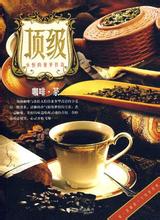Introduction to fine coffee with unique aroma and flavor characteristics of Yega Ficher Manor Coffee
This coffee has a unique aroma, showing citrus, orange fruit, syrup, balanced acidity, full aroma, smooth taste, elegant floral aroma, soft acidity in medium roasting and rich aroma in medium and deep roasting.
The Waka Cooperative is part of the YCFCU Cooperative Alliance. Founded in 2005, the Waka Cooperative is made up of 305 farmers, with a planting area of about 763 hectares and an annual output of nearly 460 tons. Because no chemical fertilizers and insecticides are used in coffee cultivation, Waka has obtained the Skal organic coffee certification recognized by the European Union. Small coffee farmers grow coffee in a small area in their own backyard, with an average planting area of 0.5 to 1.5 hectares per household, with coffee as the main cash crop, as well as miscellaneous grain crops such as plantains as shade and food. Only in the grain self-sufficiency of this mode of production, coupled with the local unique native tree species coffee garden, so that each batch of coffee beans are different in flavor, with considerable uniqueness.
Coffee trees are mostly planted in farmers' own backyard or mixed with other crops in the field, the yield per household is not much, it is a typical rural coffee. Yega Xuefei won the prize beans almost from the above-mentioned coffee villages and communities. The so-called "Yega Chuefei" refers to the strong aromas of jasmine, lemon or lime acid, as well as peach, almond or tea. The phrase "coffee entrance, flowers in full bloom" is best described, just as flowers promote the comfort of taste buds and olfactory cells in the nasal cavity. In addition to the fragrance of flowers, the delicate thickness of body, like silk massage in the mouth, feels wonderful. At present, many coffee chemists are beginning to study the microclimate and soil and water around Yejashafi, in order to sum up the equation for the cultivation of fine coffee. Yega Xuefei's coffee trees were planted by monks in Europe (a bit like Belgian monks growing wheat to brew beer). Later, farmers or cooperatives were responsible. Yejia Chuefei is actually constructed by surrounding coffee communities or cooperatives, including Edido Idido, Hafusa Harfusa, Hama Hama and Biloya near Fog Valley Misty valley, all washed with water, but there are also a small number of off-product beans engraved with sun to enhance the charming fruit aroma and mellow thickness. These mountain villages are foggy, spring all year round, with a gentle breeze in summer, cool but not hot, rain but not damp, and no cold damage in winter, giving birth to a unique citrus and floral regional flavor. Yega Chuefei is a by-product of Sidamo province in Sidamo, Ethiopia, located in the northwest of Sidamo, with mountains and lakes, it is one of the highest coffee-producing areas in Ethiopia. However, the mode of production and flavor here are so prominent that Ethiopian coffee farmers compete to be proud of the flavor of their coffee, so they are independent from Sidamo and have their own style. Yega Xuefei, which has become the most famous producing area in Africa, is divided into two categories according to the different ways of handling raw coffee beans: category An is washed, and the grade standard is established by the American Fine Coffee Association SCAA, which is divided into Gr-1 and Gr-2. The smaller the Arabic numeral, the higher the grade, the G1 Yega Chuefei style is distinct, and the flavor of citrus and floral flavor in the coffee liquid is an irresistible delicacy for everyone. Category B is sun-treated coffee raw beans, and the grade is Gr-1,Gr-3,Gr-4,Gr-5. Similarly, the highest grade of G1 sun Yega Chuefei is fruity. Opening the freshly roasted G1 sun Yega Chevy coffee bag can subvert everyone's original understanding of coffee. Only those who have tasted the highest grade sun Yega Chevy will believe that coffee is a kind of fruit.

Important Notice :
前街咖啡 FrontStreet Coffee has moved to new addredd:
FrontStreet Coffee Address: 315,Donghua East Road,GuangZhou
Tel:020 38364473
- Prev

Introduction to the flavor and taste of coffee from Xidamo Shachiso, Ethiopia, with a rich aroma.
In February 1977, Lieutenant Colonel Mengistu Haier Maryam (MENGISTU HAILE MARIAM) launched a military coup and served as Chairman of the interim military Administrative Council and head of State. In 1979, the Ethiopian Labor people's Party Organization Committee, dominated by soldiers, was established to implement an one-party system. In 1984, the Ethiopian Workers' Party was formed according to the Soviet Communist Party model. Mengistu, September 1987
- Next

Bright taste of Panamanian Ireta Manor Coffee Flavor characteristics Fine Coffee introduction
Central America is a long isthmus from northern Mexico to southern Colombia, connecting North and South America. Panama is located in the southernmost part of Central America, so the country runs from east to west, not from north to south as people think. This means that the coast of the Caribbean (Atlantic) is in its north, while the Pacific is in the south. So far, Panama also shares the Atlantic Ocean.
Related
- Does Rose Summer choose Blue, Green or Red? Detailed explanation of Rose Summer Coffee plots and Classification in Panamanian Jade Manor
- What is the difference between the origin, producing area, processing plant, cooperative and manor of coffee beans?
- How fine does the espresso powder fit? how to grind the espresso?
- Sca coffee roasting degree color card coffee roasting degree 8 roasting color values what do you mean?
- The practice of lattes: how to make lattes at home
- Introduction to Indonesian Fine Coffee beans-- Java Coffee producing area of Indonesian Arabica Coffee
- How much will the flavor of light and medium roasted rose summer be expressed? What baking level is rose summer suitable for?
- Introduction to the characteristics of washing, sun-drying or wet-planing coffee commonly used in Mantenin, Indonesia
- Price characteristics of Arabica Coffee Bean Starbucks introduction to Manning Coffee Bean Taste producing area Variety Manor
- What is the authentic Yega flavor? What are the flavor characteristics of the really excellent Yejasuffi coffee beans?

